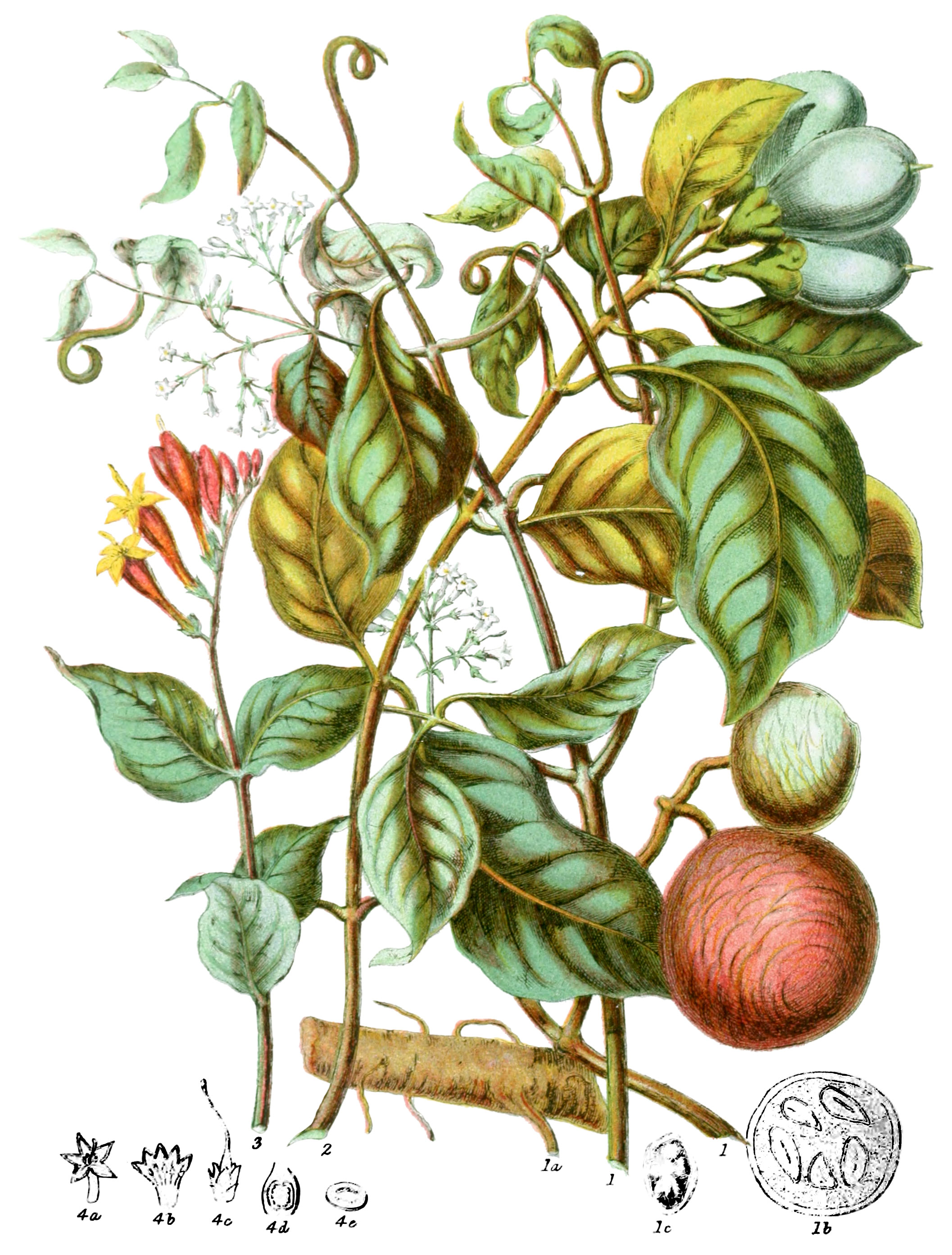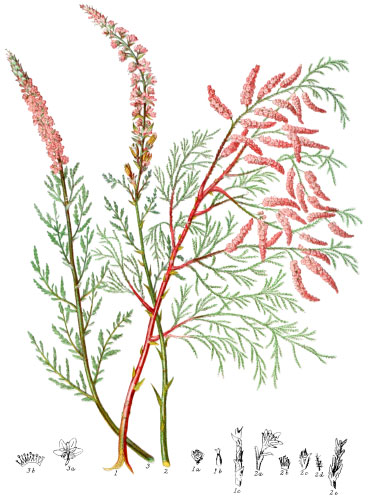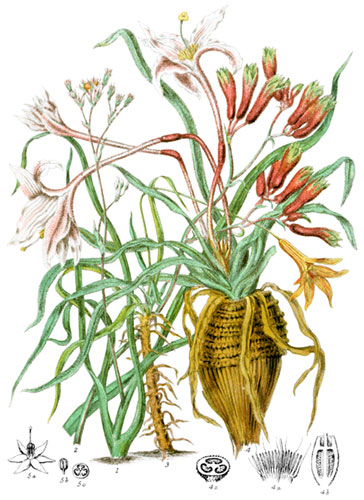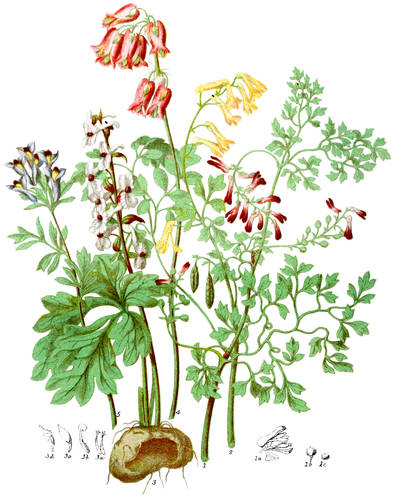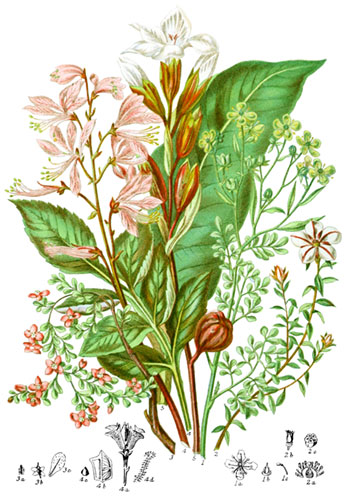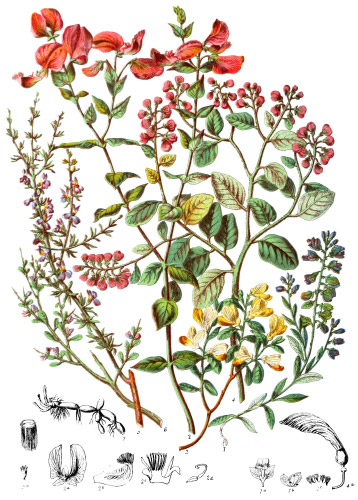Key characteristics
Trees, shrubs, and herbaceous plants. The leaves are opposite, entire at the edges, usually having stipules which adhere to the leaf-stalks, or are combined into sheaths. The flowers are on branching stalks, or solitary. The calyx is below the ovary, four or five-parted; the corolla is regular or irregular, four or five or ten-parted. The stamens arise from the corolla, all placed on the same line. The ovary is above the calyx, two-celled, the style continuous with it: the stigma simple. The fruit is either a capsule with two cells, or a drupe with one or two-seeded stones, or a berry with the seeds immersed in pulp. The seeds are sometimes winged, they contain fleshy or cartilaginous albumen.
These plants have affinity with Apocynaceæ, but are distinguished by not having milky juice, nor a glandular stigma.
Strong venomous properties exist in the seeds.
Select plants in this order
Not all plants listed are illustrated and not all plants illustrated are listed.
- The genus Strychnos includes several highly poisonous species, fatal to man and animals; S. Tieute (1) is remarkable for the virulent poison obtained from the bark of the root; it grows abundantly in Java, where it is called by the natives Tjettek.
- The seed of S. nux vomica, the Koochla, or Poison-nut of the East Indies, is one of the strongest known poisions; it has been found to contain two distinct principles, both acrid narcotics, and energetic in action. It is a small tree, bearing fruit with a brittle shell, full of gelatinous pulp, in which the seeds are embedded. The pulp is eaten by birds without injury, but the seeds contain the poisonous juices; in a small quantity they are used medicinally to cure the fever of the country, and the bites of venomous snakes, and are also employed in the distillation of spirits; their texture is so hard, they can only be broken by a rasp or file.
- S. toxifera is the principal ingredient of the celebrated Wourali poison of Guiana.
- Amongst the various febrifuges of Brazil is S. pseudoquina, said to be equal the famous Peruvian bark; the whole plant, except the fruit, which is eatable, is intensely bitter and astringent.
- S. potatorum, the clearing-nut of India, is a larger tree, and is of great value to the natives, who use the ripe seeds to purify the pond or river water, which they drink in preference to that of wells. They rub the inside of an unglazed earthen vessel with seeds, which soon causes the impure particles of the water to separate and fall to the bottom, thus rendering it pure and wholesome. The pulpy fruit is eatable, though not thought agreeable by Europeans.
- The fruit of S. spinosa is eaten by pigs in Madagascar; that of S. brachiata affords food to deer in Peru.
- Fagræa littoralis (2) bears a small white flower, much resembling that of Strychnos; it is occasionally found growing in a parasitic manner upon other trees.
- F. zeylanica has been introduced into English conservatories, but is rarely seen. All the species are found in the isles of the Indian Archipelago, as well as in India.
- Spigelia was named by Linnæus in honour of Adrian Spigelius, a Fleming, afterwards professor at Padua, in the beginning of the 17th century.
- S. marilandica (3) is considered highly valuable for its medicinal properties, both in the root and leaves in North America; it is sufficiently hardy to bear our climate in the open air, yet is not much known in gardens.
- S. anthelmia is one of the medicinal plants of the West Indies.
- S. glabrata is one of the poisonous plants of Brazil.
- The medicine called Papeeta, or St. Ignatius Beans, in India, is procured from the seeds of Ignatia amara.
- The leaves of Potalia resinifera yield a mucilaginous infusion, used as a lotion for the eyes in Brazil.
- P. amara forms a connecting link with the Gentians, possessing their bitter properties; it is at the same time acrid, like the Dog-bane tribe.
- Logania is a genus belonging to New Holland, the flowers small and white.
Locations
This Tribe inhabits chiefly the Tropics, a few species only are natives of New Holland and North and South America.
Legend
- Strychnos Tieute, Poisonous Strychnos. Java.
- Root.
- Section of Fruit.
- Seed.
- Fagræa littoralis, Indian Fagræa. E. Indies.
- Spigelia marilandica, Pink-root. N. America.
-
- Strychnos ligustrina flower.
- Flower, opened.
- Calyx and Pistil.
- Section of Ovary.
- Cross section of Ovary.
Explore more
Posters
Decorate your walls with colorful detailed posters based on Elizabeth Twining’s beautiful two-volume set from 1868.
Puzzles
Challenge yourself or someone else to assemble a puzzle of all 160 botanical illustrations.
